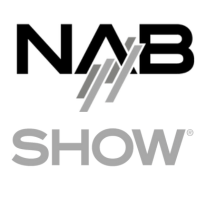Instructors
Willem Vermost is Senior Media Technology Architect at the European Broadcasting Union (EBU), where he guides Members through their transition to live IP-based production and next-generation, software-centric workflows. An electronic-engineering and applied-computer-science graduate with more than 20 years in broadcasting, Willem previously led Media Production Facilities at VRT (Brussels) and spearheaded the broadcaster’s award-winning Live IP proof-of-concepts.
Leigh Whitcomb has 31 years of experience in the broadcast industry and is currently working at Meinberg. He is actively involved in SMPTE ST 2110 Professional Media over Managed IP Networks and SMPTE ST 2059 Genlock Over IP. He is the co-inventor of several patents in the areas of networking and timing and synchronization.
Wim Van Roy is a media and technology consultant at Lawo with over 20 years of experience driving innovation in broadcast and entertainment. An expert in IP-based workflows, ST-2110, cloud technologies, and cybersecurity, Wim has guided organizations worldwide through technological transformations, from analog to UHD/8K and IP-based systems.
Course Overview
This 10h blended learning course provides an in-depth technical exploration of SMPTE ST 2110, the industry-standard suite of protocols for transporting professional media over IP networks. Designed for engineers, system integrators, and broadcast technicians, this program covers the fundamentals and advanced principles of ST 2110, including uncompressed and compressed video, audio, data encapsulation, synchronization, redundancy, and network traffic shaping.
Through structured modules, learners will design, implement, and troubleshoot ST 2110-based IP workflows, preparing them to confidently transition from SDI to IP-based production environments.
Prior experience with IP networking and digital video/audio standards is recommended.
Program Outline
(3-4h of self-paced learning, and 6h of in-person remote live sessions)
Module 2: SMPTE ST 2110 Architecture Overview
Module 3: Timing, Synchronization, and Determinism
Module 4: Introduction to AMWA NMOS Specifications
Module 5: Deep Dive into NMOS IS-04 & IS-05
Module 6: Standards-Based Interoperability and Future Outlook
Live sessions every Tue and Thu from 2 December till 16 December.
These sessions are recorded and available till the course closure 1 Feb 2026
This course is eligible for the add-on practical lab.
Get more from your SMPTE ST 2110 Experience with our Practical Lab Add-On 1-day self-paced session!
This hands-on, sandbox experience will allow participants to design, sync, and troubleshoot real-world live-production workflows using a real remote ST 2110 IP Networking set-up. This is the best way to immediately apply what is learned in this course and gain additional experience that you can apply in real-world scenarios. Learn more
*The Practical Lab is made possible thanks to the generous in-kind contributions of our valued partners, including Lawo Academy, Arista, Blackmagic Design, Meinberg, Bridge Technologies, Matrox, AJA and more.
-1.png?width=827&height=256&name=download%20(1)-1.png)





 Education, Membership and Standards Directors
Education, Membership and Standards Directors
 Fellows
Fellows
 Award Programs
Award Programs
 Society Governance
Society Governance







 Section Officers and Managers
Section Officers and Managers
 Section Event Non-Member Sign-Up
Section Event Non-Member Sign-Up










 Standards Projects
Standards Projects
 Registration Authority
Registration Authority
 SMPTE GitHub
SMPTE GitHub
 Patent Statements
Patent Statements
 Advisory Notes
Advisory Notes
 Appeals
Appeals
 Work with SMPTE
Work with SMPTE




 Editorial Calendar
Editorial Calendar
 Guidelines for Submitting
Guidelines for Submitting
 Subscribe
Subscribe
 Board of Editors
Board of Editors






 Media Kit
Media Kit
 SMPTE Logos
SMPTE Logos
 Support Request
Support Request
 Get Alerts!
Get Alerts!
 SMPTE Stories
SMPTE Stories
